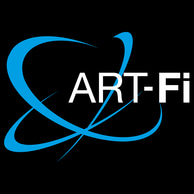Mathias Fink
Mathias Fink is the George Charpak Professor at the Ecole Superieure de Physique et de Chimie Industrielles de la Ville de Paris (ESPCI Paris) where he founded In 1990 the Laboratory “Ondes et Acoustique” that became in 2009 the Langevin Institute. He is member of the French Academy of Science and of the National Academy of Technologies of France. In 2008, he was elected at the College de France on the Chair of Technological Innovation. He has received several scientific awards as the CNRS Medal of innovation, the Helmholtz-Rayleigh Award of the Acoustical Society of America, the Rayleigh Award of the IEEE Ultrasonics Society and the Edwin H. Land Medal of the Optical Society of America
Mathias Fink’s area of research is concerned with the propagation of waves in complex media and the development of numerous instruments based on this basic research. His current research interests include wave control in complex media, time-reversal in physics, metamaterials, telecommunications, super-resolution, medical ultrasonic imaging, multiwave imaging, acoustic smart objects, underwater acoustics and geophysics. He pioneered different inventions in telecommunications (Time-reversal processing and Reconfigurable intelligent surfaces) and in medical imaging (ultrafast ultrasonic imaging, transient Elastography, supersonic shear imaging and shear wave Elastography). His work has accumulated more than 52.000 citations and he holds more than 75 patents, and has published more than 450 peer reviewed papers and book chapters. 6 start-up companies with more than 400 employees have been created from his research (Echosens, Sensitive Object, Supersonic Imagine, Time Reversal Communications, CardiaWave and GreenerWave).
“The technology developed by ART-Fi to predict the value of the electromagnetic field perceived by a smartphone user is very original. It exploits the principles of holography and by using the phase information and the inversion of Maxwell's equations, it allows to reach an unbeatable precision compared to other techniques. It is without context a technological breakthrough.”


